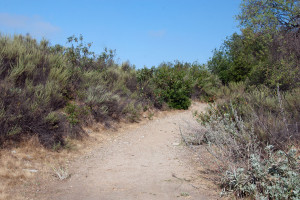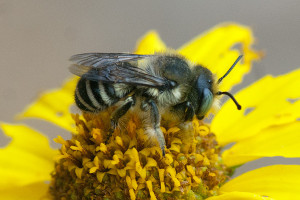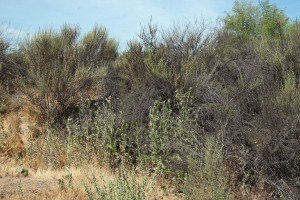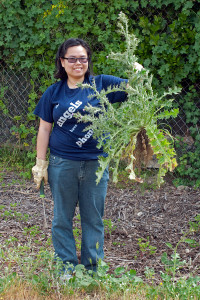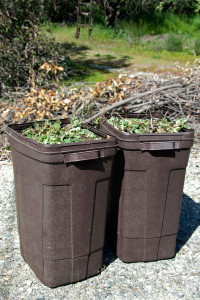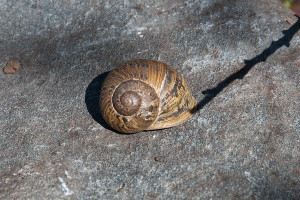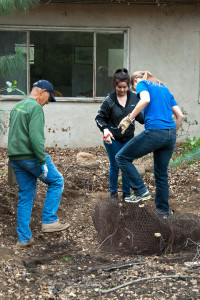Some time in the past, perhaps in the early 1970s, a very large mound of dirt was dumped on what is now the southwestern portion of the BFS in preparation for a development that never happened. Because the dirt in the mound has more clay than the native BFS soil, it retains more water, and a depression in the this mound became a vernal pool where the Western Toads (Anaxyrus boreas) have mated and laid their eggs for many years.
Native vegetation has covered much of the mound, but a large area on the top has been occupied almost entirely by invasive weeds – mustard, Italian Thistles, and grasses. Last spring we started removing mustard and Italian Thistles, and during last July and August we solarized a large weedy area on top of the mound.
The solarization was very successful, killing all the mustard, thistles, and grass in the treated area. Interestingly, seeds of Red-stem Filaree (Erodium cicutarium) survived the treatment, so the solarized area is now essentially an E. cicutarium monoculture. The surrounding area, however, still harbored seeds, so a border of mustard and Italian Thistles sprang up around the solarized area. This past Saturday, student volunteers from Harvey Mudd, Pomona, and Mt. San Antonio Colleges removed these mustards and Italian Thistles from the top of the mound, pulling the plants where they could, and cutting them at the base where the clay soil was too hard to pull the weeds. Here you can see them hard at work. (Scroll down to the bottom for a timeline of the transformation over the last year).

Fabioloa Ospima and Ivan Quevedo (Mt. Sac). ©Nancy Hamlett.

Michael Lertvilai (HMC ’15) and Kevin Coon (Mt. Sac). ©Nancy Hamlett.

Anne Clark (HMC ’13). ©Nancy Hamlett.

Molly Horgan (Pomona ’14). ©Nancy Hamlett.

Maria Morabe (HMC ’13). ©Nancy Hamlett.

At the end of the day, we had several big piles of mustard and thistles. ©Nancy Hamlett.
As we were finishing up, we found a patch of Italian Thistles that was being eaten by caterpillars, who had rolled the leaves up with webbing while they munch away. One of them hitched a ride back to the field house on a volunteer’s shirt, and by attempting to feed it different leaves, the volunteers determined that it really preferred thistles. A little research revealed that these were caterpillars of the Painted Lady butterfly (Vanessa cardui), and that they are sometimes even known as “Thistle Caterpillars“.

A Painted Lady (Vanessa cardui) caterpillar on an Italian Thistle leaf. ©Nancy Hamlett.
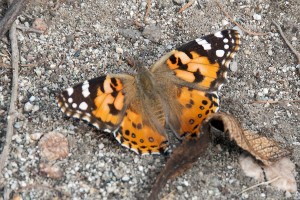
A Painted Lady, Vanessa cardui, in the trail on the north side of pHake Lake. ©Nancy Hamlett.
To put the work in context, here’s a series of photos that show the timeline of the transformation of the area over the last year:
5 May 2012:

5 May 2012: The top of the toad pond mound covered with mustard and Italian Thistles. ©Nancy Hamlett
5 May 2012:

Four tired volunteers – Tim Cox, Elliott Cox, Lee Krusa, and Cleo Stannard (HMC ’15) – who have just cleared the mound of mustard and thistles. ©Nancy Hamlett
26 June 2012:

The cleared area prior to solarization. ©Nancy Hamlett.
7 July 2012:

We fenced the solarization to keep the coyotes from playing on the plastic. Tim Cox, Prof. Dick Haskell (HMC), Bryan Visser (HMC ’13), and Anne Clarke (HMC ’13) put in the last fence support. ©Nancy Hamlett.
19 April 2013:

The solarized area growing Red-stem Filaree, bordered by mustard, Italian Thistles, and grass. ©Nancy Hamlett.
21 April 2013:
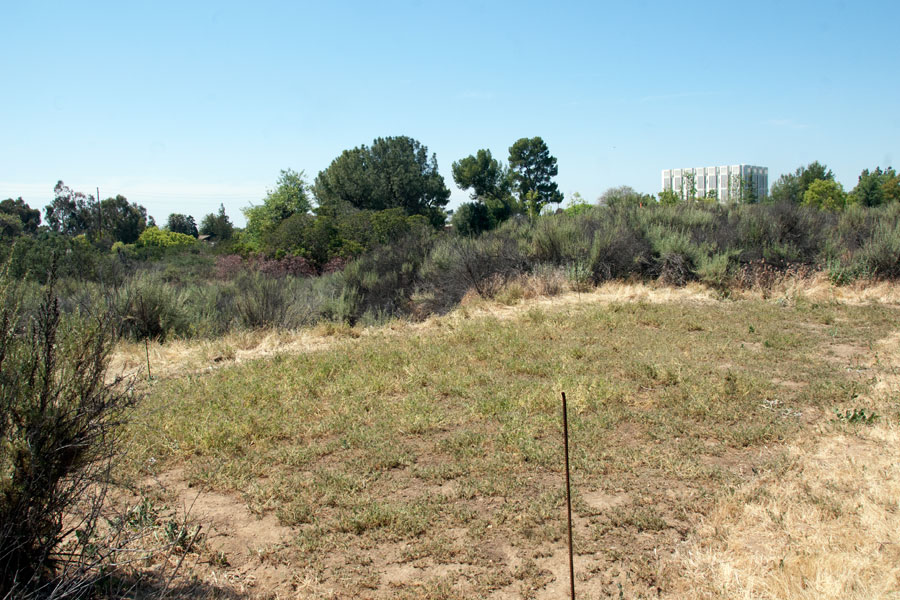
The top of the toad pond mound with mustard and Italian Thistles removed from the border of the solarized area. ©Nancy Hamlett.
Tags: Carduus pycnocephalus, Italian Thistle, mustard, volunteers






